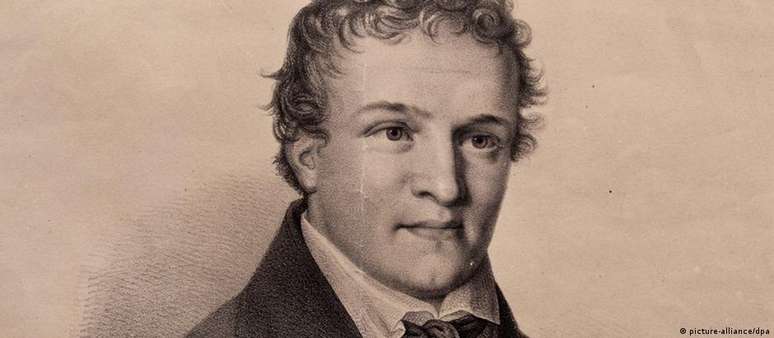On 17 December 1833 Kaspar Hauser died in the town of Ansbach following a stabbing by an unknown person. Five years earlier he had appeared in Nuremberg without anyone knowing where he came from.” They say he was from Nuremberg and couldn’t say a word. In the market square they formed a circle around him to observe him. Some said he was an animal, others asked what he wanted here and to hell, out with him, out with him…”
But the curiosity of the citizens of Nuremberg did not allow them to expel him on that Whit Monday of 1828. The poet and philosopher Anselm von Feuerbach described “a young man in peasant clothes, who stood there in a very strange posture and tried to move forward, with the look of a drunk, unable to stand upright and unable to control his feet.”
Taken to the police station, he was unable to provide information about himself: neither his name, nor his origin, nor his profession could be ascertained by the authorities. His answers were always nonsense, more stammered than spoken. And often a “fussy trouble” (I don’t know, in Bavarian dialect).
Unable to get more information about the stranger. But he carried with him a letter addressed “to the excellent captain” of a certain military regiment. Cavalry soldiers abandoned the young man in the Nuremberg market square.
The stranger, aged around 20, was called Kaspar Hauser. The fate of this “son of Europe”, as he was called, moved public opinion in the 19th century like few other events. Throughout the continent the story of the mysterious young man who appeared out of nowhere in Nuremberg could be read in gazettes and newspapers.
Even today, countless books and theses, film dramas and television miniseries are produced, always with new versions and interpretations of the story. However, at least one of the rumors could be denied by pathologists in 1998: that according to which Kaspar Hauser was the son of a noble family from the Principality of Baden and that, due to intrigues, he had been exchanged shortly after birth and had grown up trapped in a prison.
The story seemed plausible, as the boy was probably born in 1812 and grew up in complete isolation, without contact with other people. Anselm Feuerbach, who was also a jurist, spoke of “a crime against the intellectual life of a human being”. But Kaspar Hauser had nothing to do with the noble lineage of the princes of Baden, as demonstrated through genetic examination carried out with the most modern techniques.
Indisputable, however, is the fact that the boy – disoriented, completely distracted and almost demented when he was found – managed to successfully absorb in just four years the most progressive school education of his time. He learned music and demonstrated a talent for poetry. Could it be that he had an “upper class origin”? Who knows, was he even Napoleon’s son?
Be that as it may, Kaspar Hauser did not live long. He had been transferred to the city of Ansbach, near Nuremberg. He went for a walk there on December 14, 1833, when he was stabbed in the chest by a stranger. It was the second mysterious attempt on his life since he appeared in Nuremberg’s market square. This time he managed to survive the stabbing for only three days.
Although real, Kaspar Hauser’s life seems like a product of fiction. At the site of his murder a sign was placed with the Latin writing: Hic occultus occulto occisus est (“Here a mysterious person was murdered in a mysterious way”).
——–
Deutsche Welle is Germany’s international broadcaster and produces independent journalism in 30 languages. Follow us on Facebook | Twitter | Youtube
| Whatsapp | Application | Instagram | News bulletin
Source: Terra
Rose James is a Gossipify movie and series reviewer known for her in-depth analysis and unique perspective on the latest releases. With a background in film studies, she provides engaging and informative reviews, and keeps readers up to date with industry trends and emerging talents.






